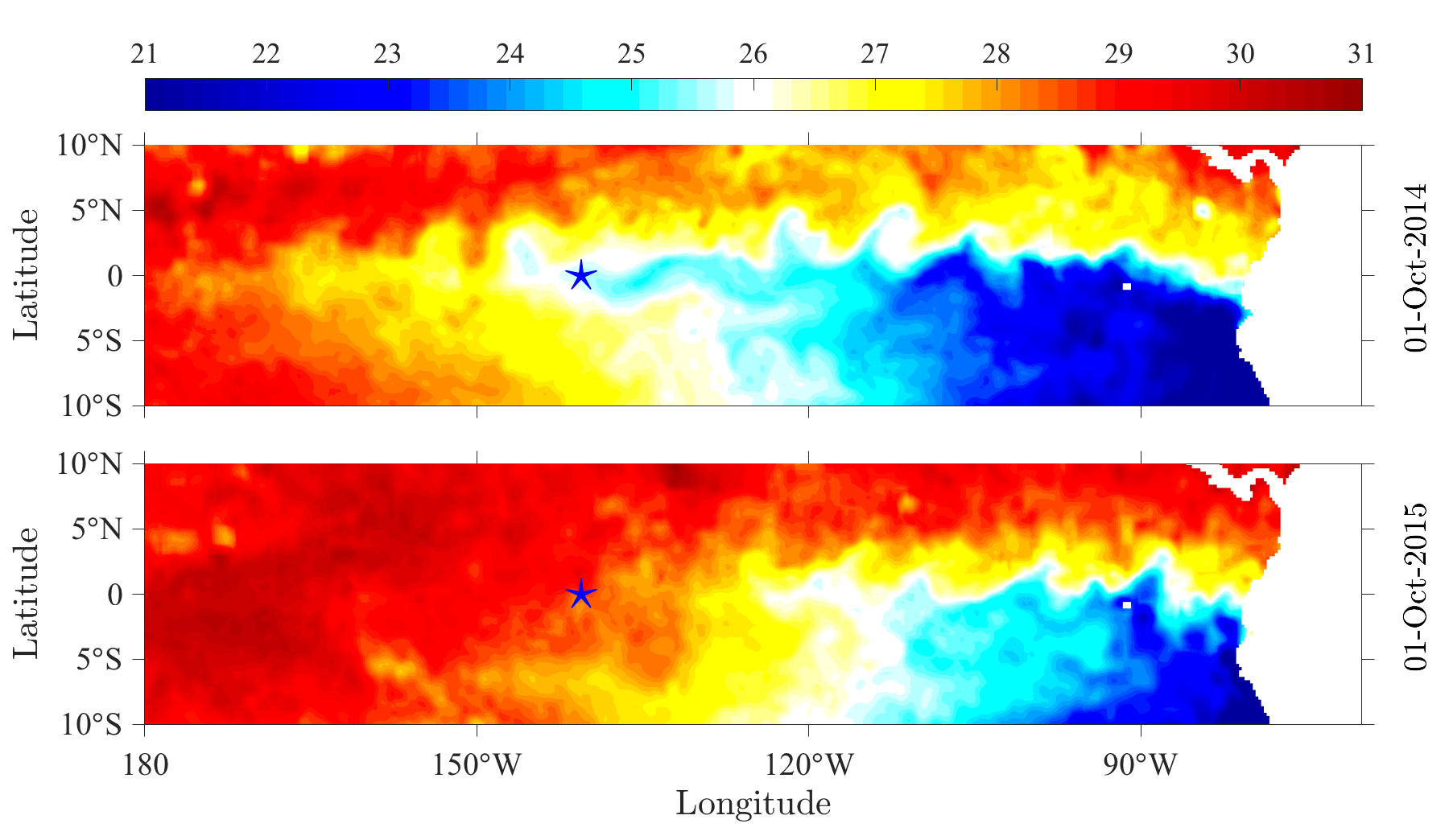

Since first discovered many decades ago in the Pacific Equatorial Undercurrents (EUC), processes leading to deep-cycle (DC) turbulence remain a mystery. The night-time DC turbulence causes enhanced mixing in the marginally-unstable regions where background shear and stratification are strong due to the presence of the EUC and the thermocline. Numerous mechanisms leading to DC turbulence have been proposed such as obstacle effects, local shear instability, breaking internal waves, etc.; however, further evidence is needed in order to support the proposed mechanisms. Understanding the processes leading to the DC turbulence and its associated mixing is of practical interest because it plays a crucial role in the heat budget of upper equatorial oceans, and therefore, can affect global climate.
We constructed LES simulations based on the observational data to quantify the amount of mixing by the DC turbulence. Some important findings that I discover are: (1) a new mechanism that can trigger the DC turbulence via marginal instability (Pham et al. 2012, Pham et al. 2013, Smyth et al. 2017}; and (2) an explanation of why the observed DC turbulence in the spring is significantly weaker than in other seasons (Pham et al. 2017}. Recently, we begin to investigate the effect of marginal instability and DC turbulence on the warming of SST during the 2014-2016 El Niño Southern Oscillations (ENSO) event.
Figure 1 contrasts sea surface temperature (SST) during the weak 2014 El Niño (upper) and the strong 2015 El Niño (lower). The event caused a record high SST anomaly as the cold tongue withdrew toward the Central American coast. We will use a combination of observational data, DNS and LES to quantify and parametrize turbulent mixing during this time period. A preliminary result is shown in Figure 2. Here, we performed DNS of a stratified shear flow at a high Reynolds number to explore how the evolution of shear instabilities controls the rate of turbulent mixing. DNS provides an accurate quantification of the rate of mixing which can be used to assess mixing parameterization schemes used in general circulation models.